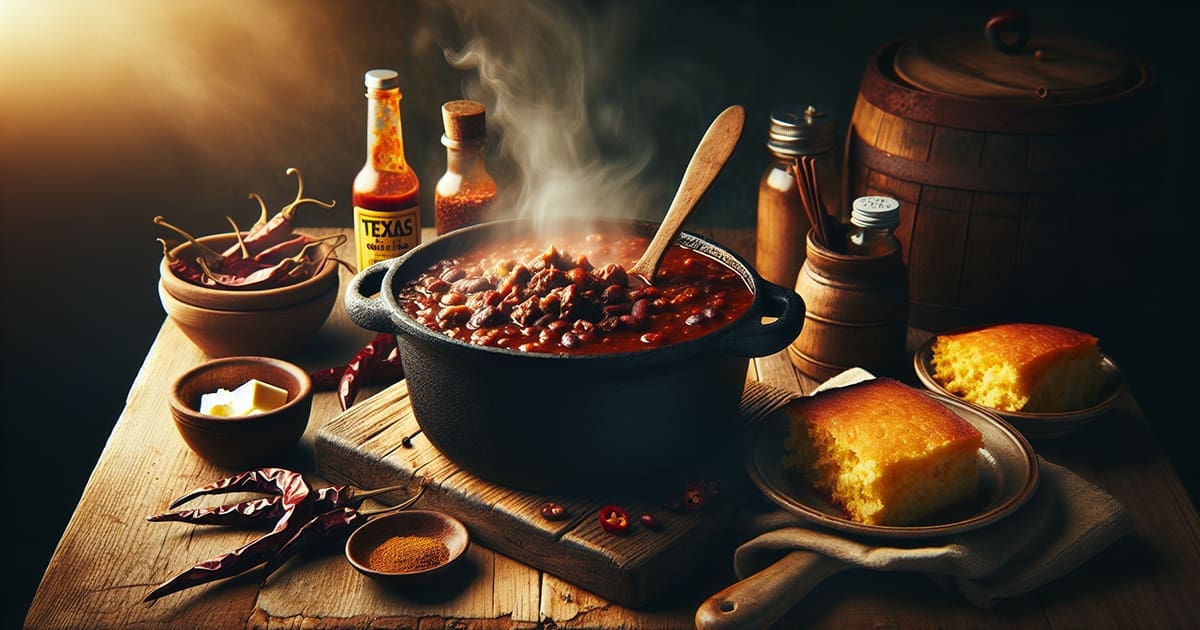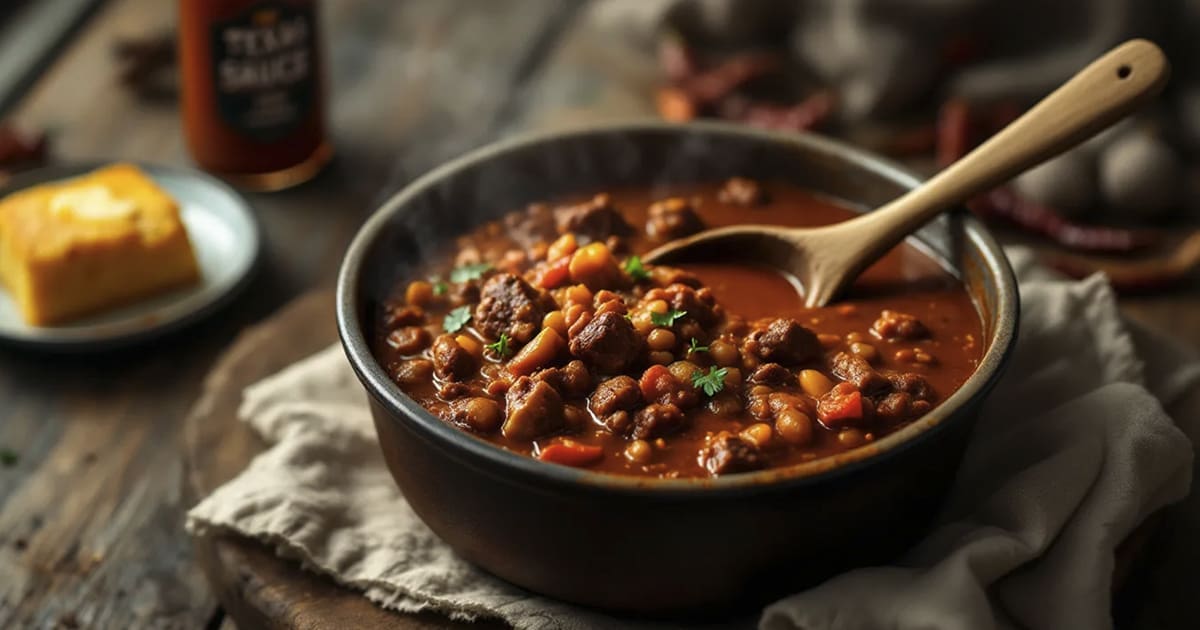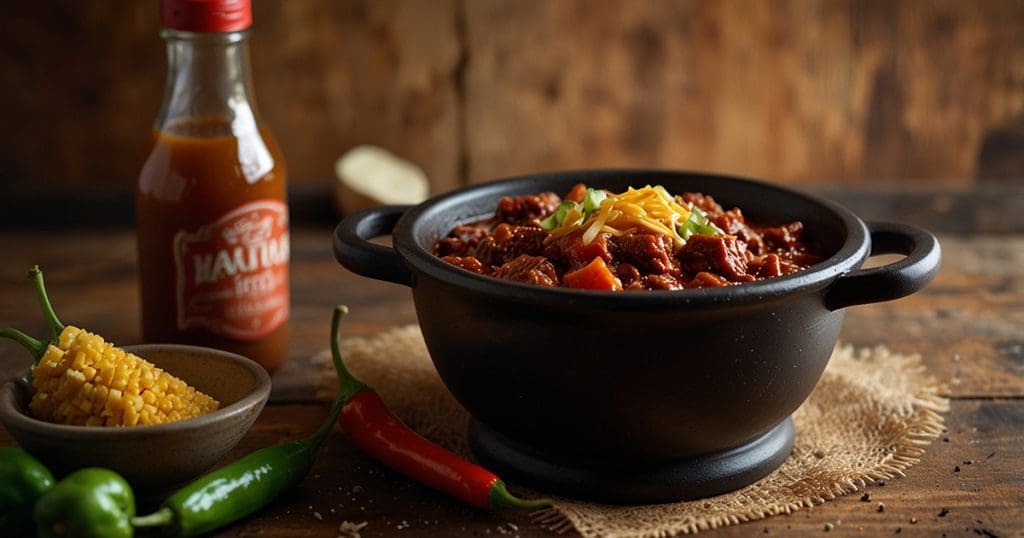The History of Texas Chili
Texas chili, often referred to as 'bowl of red,' has a rich history deeply rooted in Texan culture. Unlike other chili variations, traditional Texas chili contains no beans or tomatoes. Its origins date back to the 1800s, when cowboys and trail cooks created hearty, meat-based stews for long cattle drives. Over time, this dish became a staple at cook-offs and home kitchens alike, celebrated for its bold, spicy flavors. In 1977, the Texas Legislature declared chili the official state dish. Today, it remains a beloved comfort food, with regional variations adding their own unique touch.
Essential Ingredients for Authentic Texas Chili
To make true authentic Texas chili, you need high-quality beef—preferably chuck roast or brisket—cut into chunks rather than ground. The spice mix is the heart of the dish, typically featuring dried chilies like ancho and guajillo, cumin, garlic, and oregano. A slow-cooked, rich broth develops from beef stock and rendered fat, creating a deep, complex flavor. Many purists insist on no beans or tomatoes, keeping the focus on the meat and spices. A finishing touch of masa harina helps thicken the stew and enhance the texture for making a good homemade chili.

Step-by-Step Guide to Making Texas Chili
1. Prepare the Chilies: Toast and rehydrate dried chilies, then blend into a smooth paste.
2. Sear the Meat: Brown beef chunks in a heavy pot for a rich, caramelized flavor.
3. Build the Base: Cook onions, garlic, and spices in rendered fat until aromatic.
4. Simmer Low and Slow: Add chili paste, beef broth, and let it cook for at least two hours.
5. Final Touches: Adjust seasoning, add masa harina for thickness, and let it rest before serving.
What Makes Texas Chili Unique?
Unlike other chili styles, Texas chili is all about bold flavors and a thick, hearty consistency. The use of whole dried chilies, slow-cooked beef, and a deep umami-rich broth sets it apart from chili con carne or Cincinnati chili. By omitting beans and tomatoes, the dish keeps a robust, meaty profile that lets the spices shine. This makes it perfect for pairing with cornbread or enjoying on its own.
Popular Variations of Texas Chili
While traditionalists stick to the classic recipe, there are many regional adaptations. Some cooks incorporate venison for a gamier flavor, while others add coffee or dark chocolate for depth. In Central Texas, you might find a version with a splash of beer to enhance the broth. No matter the variation, the soul of Texas chili remains unchanged—a hearty, comforting dish meant to be savored.
How to Serve and Pair Texas Chili
Texas chili is best served hot with simple accompaniments that enhance its flavor. Many enjoy it with a side of warm cornbread, flour tortillas, or even over a baked potato. Toppings like diced onions, shredded cheese, and a squeeze of lime add freshness and contrast. To drink, a cold lager or a bold Texas red wine pairs beautifully.

Final Thoughts: Keeping the Tradition Alive
Whether you're making Texas chili for a competition or a cozy night in, honoring its rich history and bold flavors is key. Stick to the basics—good meat, quality spices, and slow cooking—and you'll create a dish that truly embodies the spirit of Texas. Share your chili with friends and family, and keep the tradition alive with every bowl served.
What's your favorite twist on Texas chili? Let us know in the comments!


![Ground Beef Taco Salad [recipe]](https://b3860431.smushcdn.com/3860431/wp-content/uploads/2024/04/Ground-Beef-Taco-Salad-Recipe-1024x538.jpg?lossy=2&strip=1&webp=1)
![Canned Biscuits Pull-Apart Garlic Bread [recipe]](https://b3860431.smushcdn.com/3860431/wp-content/uploads/2024/04/Canned-Biscuits-Pull-Apart-Garlic-Bread-Recipe-1024x538.jpg?lossy=2&strip=1&webp=1)
Facebook Comments